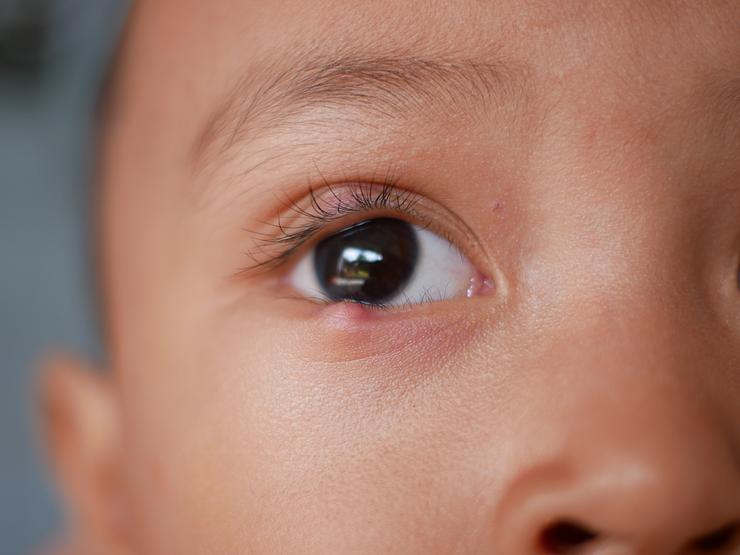Medically reviewed by Dr. Danielle Campbell
From the FYidoctors - Comox Valley
Best Stye Eye Drops: Types and Uses

Best Stye Eye Drops: Types and Uses
If you've got a stye, those annoying, pimple-like bumps on your eyelid, don’t worry! While they look a bit scary, styes are common and not too serious. They occur when an oil gland on your eyelid gets blocked and becomes infected. You can often treat a stye at home with warm compresses and keeping your eyelids clean. Sometimes, over-the-counter eye drops can help soothe your eye too. But if your stye sticks around for more than a week, or if it really hurts, it’s a good idea to see an optometrist. They may prescribe medication or even suggest a little procedure to fix it up fast.
What is a Stye?
A stye, medically known as a hordeolum, is an infection that occurs when an oil gland in your eyelid becomes clogged and inflamed. This blockage allows bacteria, typically staphylococcus, to grow and multiply, leading to the formation of a tender, pimple-like bump. Styes can develop:
- On the outside of your eyelid, near the eyelashes (external hordeolum)
- Inside your eyelid, on the underside (internal hordeolum)
Symptoms of a stye often include:
- A red, painful lump on your eyelid
- Eyelid swelling and tenderness
- A feeling like something is in your eye
- Crusting around the eyelid margins
- Tearing and light sensitivity
How Do Styes Develop?
Styes form when the oil glands in your eyelids, called meibomian glands, become clogged or blocked. These glands normally produce an oily substance that helps lubricate your eyes and prevents tear evaporation. However, when they get plugged up, bacteria—particularly staphylococcus—can multiply and cause an infection.
Several factors can contribute to the development of styes:
- Poor eyelid hygiene
- Using expired or contaminated eye makeup
- Touching your eyes with unwashed hands
- Certain skin conditions, like rosacea or seborrheic dermatitis
- Hormonal changes
Home Remedies for Stye Relief
While styes can be uncomfortable and unsightly, most cases can be managed at home with simple remedies. One of the most effective treatments is applying a warm compress with a heat pack to the affected eye for 10-15 minutes, 3-4 times a day. The heat helps increase blood flow, reduces swelling, and encourages the stye to drain naturally.
Keeping the eyelids clean is also crucial in promoting healing and preventing further infection. Use a specialized eyelid cleanser or eyelid wipe to gently clean your eyelids, especially along the lash line. You can also try over-the-counter preservative free artificial tears to soothe irritation and keep the eye moist.
Pro Tip: A microwave safe heat pack is best for holding heat, if a microwave is not available, you can make a warm compress using a clean washcloth. Soak a clean washcloth in warm water, wring it out, and apply it to your closed eyelid. Reheat the compress as needed to maintain a comfortable temperature. Never use hot water, as this can damage the delicate skin around your eyes.When to Consult a Doctor for Styes
While most styes can be managed at home, there are times when it's crucial to seek professional medical advice. If you have a stye that persists for more than a week despite home treatments, or if you experience multiple styes in a short period, it's time to consult an eye doctor.
Persistent or recurrent styes may indicate an underlying health issue, such as blepharitis (chronic eyelid inflammation) or a weakened immune system. In some cases, what appears to be a stye could actually be a more serious condition, like a chalazion or even a cancerous growth. Timely consultation with an eye care professional can help prevent complications and ensure proper treatment.
Warning Signs: See your doctor of optometry immediately if you experience severe pain, redness, or swelling around your eye, or if your vision becomes affected. These symptoms could signal a more serious infection that requires prompt medical attention.Medical Treatments for Styes
If a stye persists or worsens despite home remedies, your eye doctor may recommend medical treatment. In severe cases, antibiotics may be prescribed to combat the bacterial infection causing the stye. These antibiotics can be administered orally or through topical ointments, such as erythromycin, which is applied directly to the affected area.
Did You Know? The bacteria that cause styes, usually Staphylococcus aureus, are contagious. While styes themselves aren't contagious, it's important to practice good hygiene, like washing your hands and avoiding touching or rubbing your eyes, to prevent the spread of bacteria.Topical antibiotics work by either preventing the growth of bacteria (bacteriostatic) or killing the bacteria outright (bactericidal). The choice of antibiotic depends on the severity of the infection and the specific type of bacteria involved. Your eye doctor will determine the most appropriate course of treatment based on your individual case.
In rare instances, a stye may require surgical intervention. This is typically reserved for cases where the stye is particularly large, painful, or unresponsive to other treatments. The procedure, performed by an eye care professional, involves carefully draining the stye to promote healing.
FAQ
What eye drops are best for a stye?
How do you get rid of a stye fast?
Can eye drops stop a stye?
What triggers an eye stye?
What is the best antibiotic for a stye?
How long does it take for a stye to go away with antibiotic eye drops?
How to treat a stye in a child's eye?
Should a child with a stye go to school?